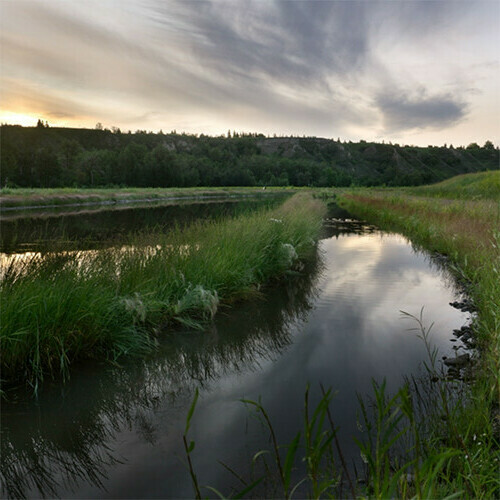
Introduction
Wastewater treatment and biodiversity conservation are essential components of environmental management that are often addressed separately. However, understanding the interconnectedness of these fields can lead to more effective and sustainable solutions. This article aims to delve into the various dimensions of wastewater treatment and biodiversity conservation, highlighting their relevance and importance in safeguarding ecosystems.
Historical Background
Throughout history, wastewater treatment practices have evolved in response to increasing population and industrialization. Simultaneously, efforts towards biodiversity conservation emerged as a response to the degradation of natural habitats. Over time, it became evident that wastewater treatment and biodiversity conservation are intimately linked, as poor wastewater management can have detrimental effects on ecosystems.
Key Concepts and Definitions
To comprehend the complexities of wastewater treatment and biodiversity conservation, it is crucial to understand the key concepts and definitions associated with these fields. Wastewater treatment involves the process of removing contaminants from wastewater to make it safe for release into the environment. On the other hand, biodiversity conservation focuses on protecting and preserving the variety of plant and animal species in a given area. Recognizing the ecosystem services provided by biodiversity conservation further emphasizes the need for its preservation.
Main Discussion Points
The impact of wastewater on biodiversity
Wastewater can have severe negative effects on ecosystems by introducing pollutants such as heavy metals, nutrients, and pathogens. These contaminants disrupt the delicate balance of ecosystems and endanger various species. Examples of specific pollutants and their effects on biodiversity illustrate the gravity of the situation.
The role of wastewater treatment in biodiversity conservation
Wastewater treatment plays a vital role in mitigating the negative impacts of wastewater on biodiversity. Understanding how different wastewater treatment technologies work and their effectiveness is crucial in developing sustainable solutions. By removing contaminants and improving water quality, wastewater treatment can contribute to the conservation of biodiversity.
Synergies between wastewater treatment and biodiversity conservation
Wastewater treatment facilities can support biodiversity by providing habitats and resources for various species. Creating wetlands and other nature-based solutions within treatment systems can enhance biodiversity and contribute to overall ecosystem health. Several successful integration examples showcase the potential for synergy between wastewater treatment and biodiversity conservation.
Case Studies or Examples
Case study: Successful wastewater treatment project with positive biodiversity outcomes
Highlighting a specific wastewater treatment project that prioritized biodiversity conservation can demonstrate the positive outcomes it achieved. Describing the project’s goals and showcasing the results and impact on biodiversity helps emphasize the potential of such initiatives.
Case study: Challenges and lessons learned from a failed wastewater treatment project
Examining a failed wastewater treatment project and its negative effects on biodiversity provides valuable insights into potential risks and challenges. Identifying the reasons for failure helps avoid similar mistakes in the future.
Current Trends or Developments
Recent advancements in wastewater treatment technologies
Continual advancements in wastewater treatment technologies offer promising possibilities for enhancing efficiency and minimizing environmental impacts. Exploring these advancements sheds light on future prospects.
Emerging research on the impacts of wastewater on biodiversity
Ongoing research on the impacts of wastewater on biodiversity helps improve our understanding of the issue and informs decision-making processes. Staying updated on the latest findings is crucial for effective management.
Increasing focus on nature-based solutions for wastewater treatment and biodiversity conservation
Nature-based solutions, such as constructed wetlands and green infrastructure, are gaining recognition for their potential in both wastewater treatment and biodiversity conservation. Emphasizing these approaches can lead to more sustainable practices.
Challenges or Controversies
Debate over the effectiveness and feasibility of certain wastewater treatment methods
Different wastewater treatment methods have varying degrees of effectiveness and feasibility, leading to debates within the field. Understanding the strengths and limitations of each method is essential for informed decision-making.
Conflicting interests between wastewater treatment and biodiversity conservation
Conflicting interests can arise between wastewater treatment and biodiversity conservation, especially in cases where trade-offs need to be made. Identifying and addressing these conflicts is crucial for finding balanced and sustainable solutions.
Challenges in implementing biodiversity-friendly wastewater treatment practices in developing countries
Implementing biodiversity-friendly wastewater treatment practices in developing countries can pose significant challenges due to limited resources and infrastructure. Identifying these challenges can guide efforts in overcoming them.
Future Outlook
Potential for innovative wastewater treatment approaches to enhance biodiversity conservation
Innovation holds immense potential for enhancing both wastewater treatment and biodiversity conservation. Exploring novel approaches and technologies can pave the way for more sustainable practices.
Integration of biodiversity conservation into wastewater treatment regulations and policies
Integrating biodiversity conservation into wastewater treatment regulations and policies ensures that environmental considerations are prioritized. This integration can lead to more comprehensive and effective solutions.
Importance of ongoing research and monitoring for continuous improvement
Continued research and monitoring are vital for identifying emerging challenges and improving wastewater treatment and biodiversity conservation practices. Emphasizing the importance of these efforts encourages ongoing improvement.
Conclusion
In conclusion, wastewater treatment and biodiversity conservation are interconnected fields that require integrated approaches. Recognizing the impacts of wastewater on biodiversity and the role of wastewater treatment in conservation is crucial. By exploring case studies, current trends, challenges, and future prospects, we can work towards a more sustainable and biodiverse future.